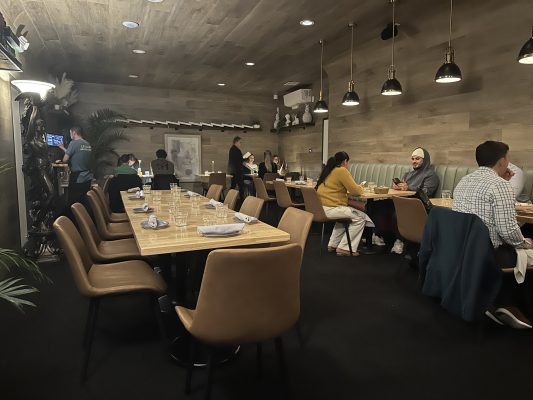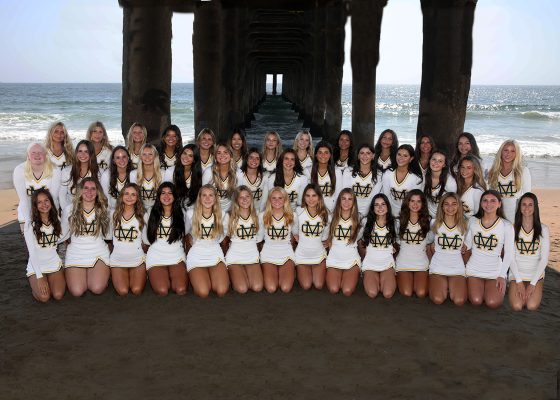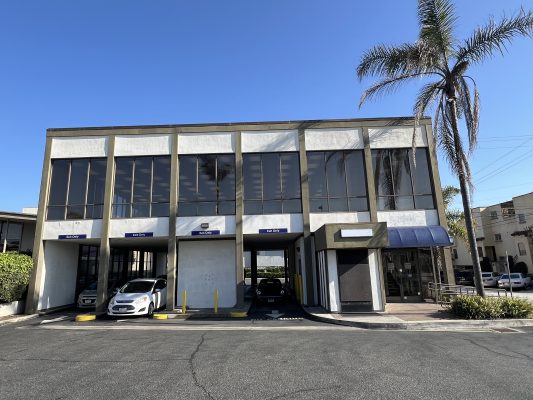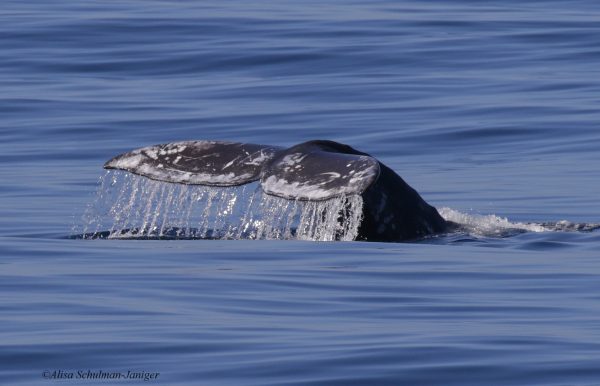
Painter Steve Shriver operates at two speeds. He can whip out a watercolor like a skateboarder thrashing downhill. Or he can take his sweet time: nearly a decade, so far, on a current project.
Lean and tan, with a sunburned nose, a soul patch and pierced ears, Steve Shriver looks like he was born on the beach. The 52-year-old artist grew up next to Rocky Point, or as he calls it, “Ground Zero of Surfing.” Although surfing, biking and skateboarding are passions, he spends much of his time indoors painting Rococo murals worthy of a European palace on the ceilings of a historic Los Angeles mansion.
Los Angeles erupted as a center of modernity after World War II and is best known in the art world for the “Light and Space” school of sleek, ultramodern art.
Shriver uncovered another Los Angeles. In the early days of the movies, Anthony Heinsbergen designed murals for hundreds of theaters across the country, including the Warner Grand in San Pedro. By 1930, Heinsbergen had accumulated enough wealth decorating movie palaces that he was able to build and decorate a palace for himself in Pacific Palisades. In cast concrete over the front door is the inscription, “Domus Constructa Pigmento,” the House That Paint Built. On and off for the past eight years Shriver has restored and invented murals for Heinsbergen’s stately home.
Song in heart, brush in hand
It wasn’t until college that Shriver knew art was his destiny. A piano and sax player, he intended to major in music at Wesleyan University, but switched to art when he found his patience exceeded his dexterity. Music is still part of his life, though. He sings and wails on harmonica with a blues-rock band called Hunch. See him on youtube.
He figured that, as a serious artist, he needed to be in New York. For a few years he hustled for a buck on the edges of the art scene. He framed, moved and hung other people’s art, but his own didn’t make it to the gallery walls.
In 1988 with daughter Claire, already on the scene and twins Sam and Tim on the way, Steve and his wife Marianne decided to move back to California. (Son Jeffrey arrived six years later.) After a few moves, they settled with Steve’s parents in Portuguese Bend in a house built by one of Vanderlip’s co-investors in the Palos Verdes project. Designed as servants’ quarters for a mansion that was never built, the three wings around a courtyard have housed three generations of Shrivers and an art studio for 18 years.
Steve comes from an artistic family. His grandfather was an interior decorator, his uncle an architect and painter. His mother, Jean, is a writer with a great appreciation of art and architecture. Steve says his patience and love of working with his hands comes from his engineer father, Charlie.

Marianne is now a nurse at Palos Verdes Intermediate School and the teen and adult children are involved in the arts. (Steve has never met fourth cousin Maria Shriver.)
Back in California, Steve discovered that gold leaf could put hamburgers on the table. He started out working for someone who was decorating moldings and marbleizing columns for Caesars Palace in Las Vegas.
Later he worked for Douglas Bauman who had been part of Anthony Heinsbergen’s firm. With Bauman’s company he painted his way around the world. In six trips to Japan, he gold- and silver-leafed buildings including JAL headquarters and the Nikko Hotel in Yokohama. As part of an 11-man crew he painted faux marble and wood as well as murals in the top-floor restaurant of the Yokohama Landmark Tower, one of Japan’s tallest buildings.
“I don’t know why they hired Americans to do traditional Japanese art,” he says.
The firm also sent him to Saudi Arabia to decorate the Four Seasons Hotel. Oddly, it was in Las Vegas that his plans for a mural were censored. For the Luxor Hotel he was to recreate “The Dream,” a 1910 painting by Henri Rousseau, which features a nude reclining on a sofa surrounded by jungle foliage. The nude had to go. A purple rhino took her place.
Domes, arches and freeway underpasses
Being away from his family for as long as six weeks at a time was hard on Shriver. In 1999, resolving to get out of decorative painting, he enrolled in a course on creating backgrounds for animation at the Los Angeles Academy of Figurative Art in Van Nuys. Thinking about foreground, background and middle ground during his commute turned freeway underpasses into stage settings for him.
In “Road Show,” his 2006 exhibit at the Torrance Art Museum, cars zipped down the freeway at night in eight watercolors he painted at freeway speed in loose, deft strokes with a broad brush. No details here, just enough information to tell the story.
But the painstaking ornamentation of the Heinsbergen mansion continued. Although the current owners had no previous knowledge of Anthony Heinsbergen, they knew history when they saw it. Most of the murals, which were painted on muslin, had been removed and discarded in the 1980s, but the vaulted living room ceiling was swathed in bands of neoclassical ornamentation – garlands, grotesques, figures, flowers and scenes from classical mythology. The design was borrowed from the Villa Madama in Rome, which was built by the Medici popes.
The modern day Medici who keep Shriver steadily employed painting and repainting are Joseph Beauchamp and his partner who own a modeling school.
They have lived for years amid the paint buckets and tarps in the multi-level Spanish-style residence that clings to a cliffside overlooking Malibu. On a recent Wednesday, workers streamed in and out, installing a dome ceiling in a guest room.
A few black and white photos allowed Shiver to reconstruct missing murals, but documentation for much of the original decoration is missing. Shriver enjoys inventing new designs in the spirit of the old for undocumented areas. Beauchamp closely monitors the design process. Sometimes he changes his mind and has Shriver repaint details or change colors.
Shriver shrugs. “I’m being paid by the hour; I don’t mind.” Besides, he’s developed a passion for ornamentation. In his spare time he immerses himself in books and websites on the history of ornamental art and exchanges photos with other aficionados he’s met through Facebook.

Shriver painted 3,000 eggs for the egg-and-dart border pattern around the ceiling of the Pompeii Room. Most people would quit after egg number 17, but the history behind the decorative motifs and the ability to tell stories with the murals makes him pursue his decorative work with the same zest he has for his freely expressive watercolors.
The central mural on the library ceiling shows Zeus and Ganymede. Around the edges, what look like carved plaster relief portraits in gilded cartouches, are fool-the-eye paintings of heroes such as Lincoln, Einstein and contemporary artist David Hockney.
Now Shriver listens to blues, techno and rock music as he paints a grape arbor down a hallway. When he adds the last highlight to the last tiny leaf, the spaces between the columns become panels on which to paint scenes from the myth of Baucis and Philemon. The work is only beginning.
But Palos Verdes could use a Renaissance, too, Shriver believes.











